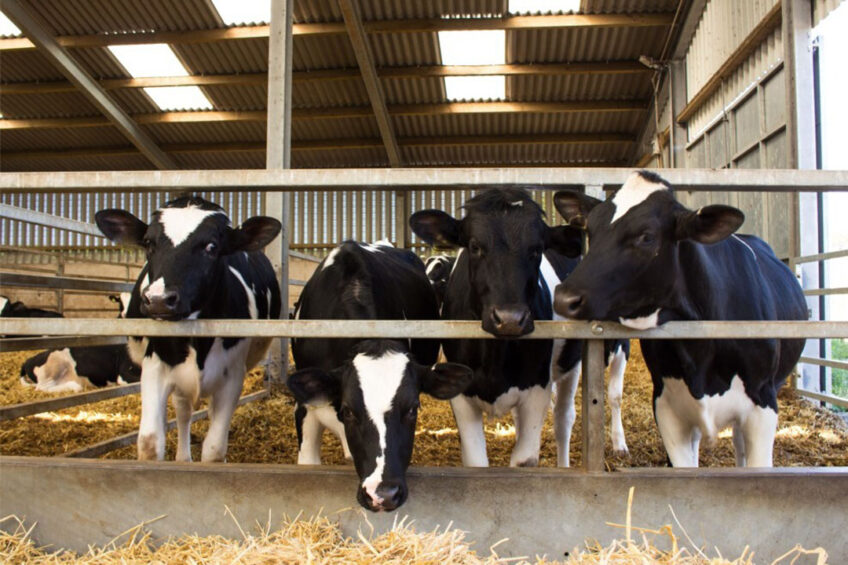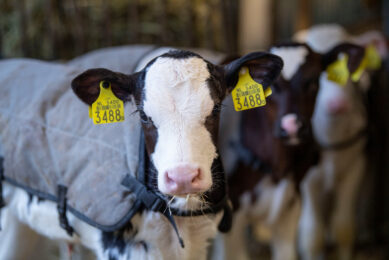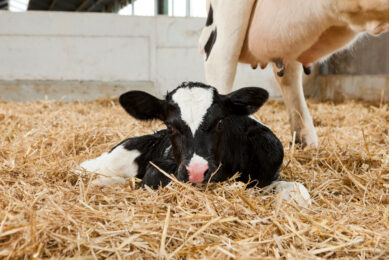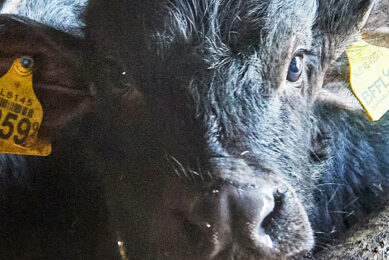How can heifer management be improved?

Influences of calf social housing on human-animal relationships are not well understood, despite implications for longer-term calf management and welfare. In a new study, researchers from the University of Florida shed some light.
There are gaps in our knowledge surrounding the development of human-directed behaviour in dairy calves reared in different housing environments. Therefore, researchers assessed the effects of social housing with calves reared individually or in pairs on human-directed behaviour during the pre-weaning and post-weaning periods in different testing contexts.
Different behaviours were assessed pre and post-weaning for carry-over effects on human-directed behaviour once calves are mingled between treatments and grouped after weaning, as this may have longer-term implications for heifer management and welfare.
Measuring human-directed behaviour
At birth, Holstein heifer calves were randomly assigned to individual housing or pair housing. A human approach test was performed in the home pen (at 3 and 5 weeks of age) and in a novel testing arena at 4 weeks of age.
The procedures for both the home pen and novel testing arena were adapted from that described by Jago et al. (1999). An additional home pen test was conducted at 8 weeks of age following the calves’ transition to group housing to examine potential carry-over effects of pre-weaning social housing on human-directed behaviour.
An ethogram was developed to define all the behaviours thatwere recorded continuously from video using Behavioural Observation Research Interactive Software. A secondary objective of this research was to examine whether human-directed behaviour in different testing contexts was correlated.
Pre-weaning human-directed behaviour
Responses during the home pen approach tests differed between individually and pair-housed calves. Individually housed calves spent more time in contact with a human and more time engaged in human-directed non-nutritive oral behaviours compared with pair-housed calves. Pair-housed calves spent less time looking toward the human inside of the arena, and more time performing pen-directed non-nutritive oral behaviours.
Post-weaning human-directed behaviour
In the post-weaning home pen approach test, there was an effect of previous housing treatment on the duration of time looking toward the human and the occurrence of human contact. Previously, individually housed calves spent more time looking toward the human and were more likely to contact the human. However, there were no significant effects of previous housing treatment on pen-directed non-nutritive oral behaviour or self-grooming.
The researchers concluded: “Our results suggest that early life social housing has effects on human-directed behaviours of dairy calves, which persist post-weaning, with calves housed individually appearing more motivated to engage in several human-directed behaviours compared with calves housed in pairs.
“It is possible that repeated testing over longer intervals or at a later period in life may shed more light on the development of human-directed behaviour. Other differences may have been apparent with a longer period of human presence or handling.”
They added that it has been speculated that animals who are housed individually have stronger responses to human-animal interactions and an increased possibility of developing a human-animal relationship due to a solitary environment. This could suggest that calves housed with conspecifics bond more with their peers, whereas calves housed individually may have bonded with humans, allowing ease of handling as they grow into heifers.
Heifer management
Findings contribute to an understanding of how early social housing, and particularly pair housing of calves, may potentially influence the development of human-directed behaviour and result in differences that persist after weaning and possibly influence the management of heifers.
It is speculated that calves that are at ease with humans may yield to heifers with low temperaments or stress and are easy to handle. A CRC Research report showed that cattle with better temperament lose less weight during long-distance transportation and regain lost weight more rapidly post-transport.
Emphasising the importance of calf handling practice, Associate Professor Amber Adams-Progar of Washington State University said: “It’s amazing how much of a difference handling practice makes, even as pre-weaned calves. It affects handling ease when they mature. Any stress on a cow or first lactation heifer ultimately affects milk let-down. We want to avoid this if we can.”
Adams-Progar believes besides the temperament of the animal, a large portion of successful heifer management depends on employees with the right skills and temperament.
“It’s not just about training the heifers,” she said. “Employees are vital to the situation. I can’t speak enough about both the safety of the handlers and the animals. People must be able to read behaviour, but this can’t be taught in an hour. It’s a certain skill set that comes together with the right temperament.”
She believes it is important for handlers working in maternity pens and with cow/calf pairs to remain calm, and steady in their movements, using correct positioning and having an awareness of their surroundings.
Join 13,000+ subscribers
Subscribe to our newsletter to stay updated about all the need-to-know content in the dairy sector, two times a week.










